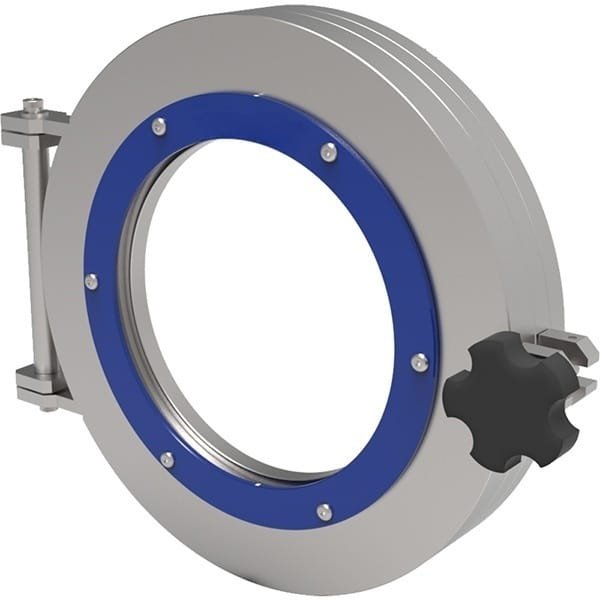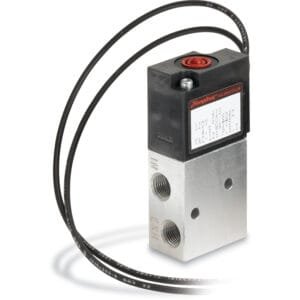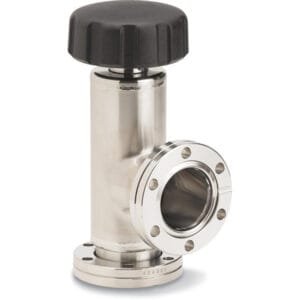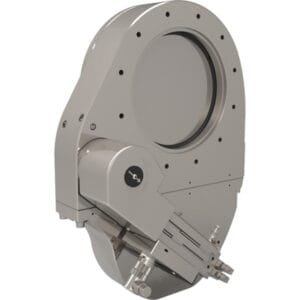Fast-Entry Access Load Lock Doors: Quick, Reliable Entry for UHV Chambers and Load Locks
TFM’s Fast-Entry Access Load Lock Doors are purpose-built for applications requiring rapid and repeatable access to vacuum vessels, including process chambers, load locks, and analytical ports. Engineered for ultra-high vacuum (UHV) compatibility, these doors feature robust sealing, precision hinge assemblies, and field-replaceable components—all designed to streamline operations and reduce maintenance downtime.
Each access door integrates seamlessly with standard UHV flanges and includes a threaded closure knob and removable viewport glass for quick entry without compromising vacuum performance.
Key Features of Fast-Entry Access Load Lock Doors:
Wide Range of UHV Flange Sizes
Available in multiple CF flange sizes, ensuring compatibility with most chamber ports and modular vacuum systems. Viewport-equipped models provide direct optical access.Precision-Hinged Access Design
The doors utilize a stainless steel hinge mechanism and fluorocarbon O-ring seal to deliver consistent, vacuum-tight closure through repeated cycles.Counterbored Mounting Bolt Configuration
Based on the KJLC® bolt design, each flange includes recessed bolt holes to maximize usable aperture space. Matching socket head bolt kits are sold separately.Easy-Access Viewport Glass
Viewports are sealed with an o-ring and are user-removable for cleaning, replacement, or optical adjustment. Standard models ship with tempered Pyrex glass; fused quartz is available upon request.Secure and Simple Operation
A threaded locking knob maintains positive closure during pumpdown. For safety, it is recommended to disengage the knob during venting to prevent overpressurization.
Applications:
Load lock entry on PVD/CVD process chambers
Transfer port access in UHV analytical equipment
Optical inspection ports in semiconductor or optics systems
General-purpose fast entry points for HV/UHV vacuum platforms
Retrofit or upgrade for legacy vacuum chamber designs
TFM also offers a complete line of Fast-Entry Access Load Lock Doors Hardware & Replacement Parts, including hinges, o-rings, glass inserts, and bolt kits, ensuring long-term serviceability and vacuum performance.
For flange size selection, material compatibility, or viewport options, consult the TFM support team or our vacuum hardware catalog.
Ordering Table
| A Flange Size | B Door Opening | C Viewport Diameter | D Thickness | Part Number |
| DN63CF (4.50" OD) | 2.51" | N/A | 1.28" | DS-LL0450 |
| DN63CF (4.50" OD) | 2.51" | 2.50" | 1.28" | DS-LL0450VP |
| DN100CF (6.00" OD) | 4.01" | N/A | 1.42" | DS-LL0600 |
| DN100CF (6.00" OD) | 4.01" | 4.00" | 1.42" | DS-LL0600VP |
| DN160CF (8.00" OD) | 6.02" | N/A | 1.41" | DS-LL0800 |
| DN160CF (8.00" OD) | 6.02" | 6.00" | 1.42" | DS-LL0800VP |
| DN200CF (10.00" OD) | 8.02" | N/A | 1.72" | DS-LL1000 |
| DN200CF (10.00" OD) | 8.02" | 6.00" | 1.72" | DS-LL1000VP |
| DN250CF (12.00" OD) | 10.02" | N/A | 1.78" | DS-LL1200 |
| DN250CF (12.00" OD) | 10.02" | 6.00" | 1.78" | DS-LL1200VP |
| DN275CF (13.25" OD) | 10.02" | N/A | 1.83" | DS-LL1325 |
| DN275CF (13.25" OD) | 10.02" | 6.00" | 1.83" | DS-LL1325VP |
| DN295CF (14.00" OD) | 11.47" | N/A | 1.83" | DS-LL1400 |
| DN295CF (14.00" OD) | 11.47" | 6.00" | 1.83" | DS-LL1400VP |





Reviews
There are no reviews yet.